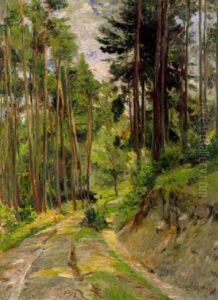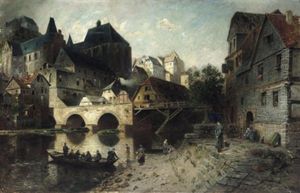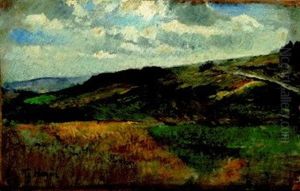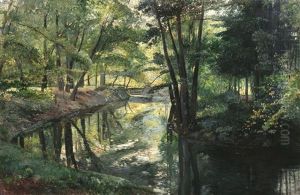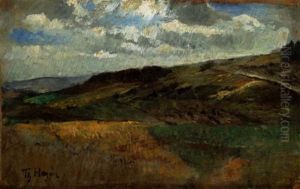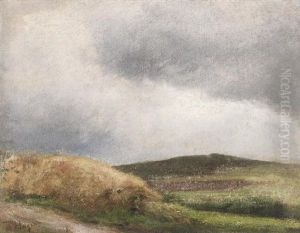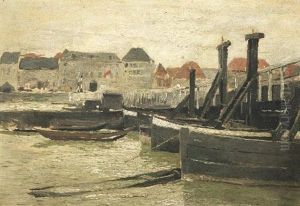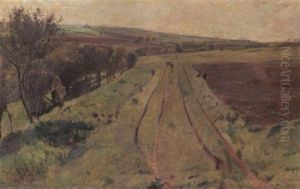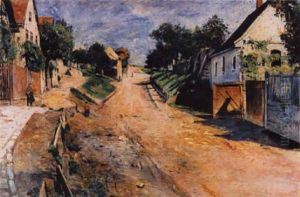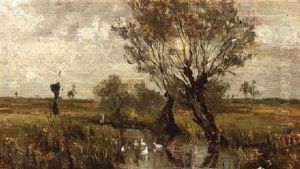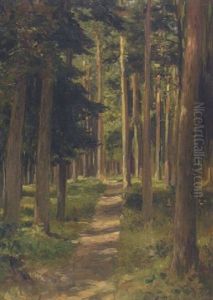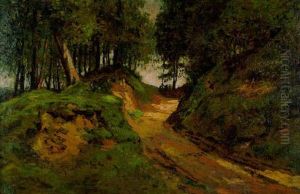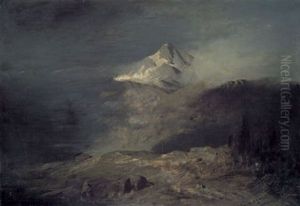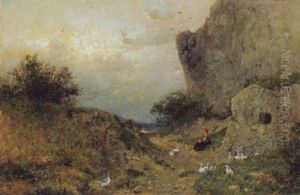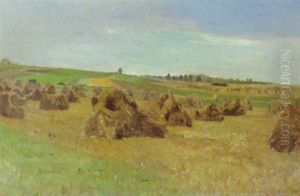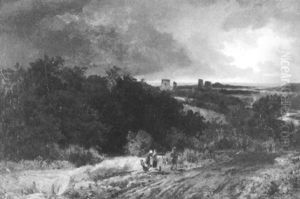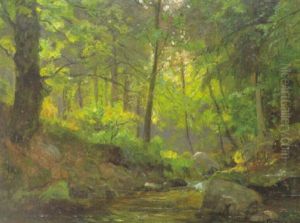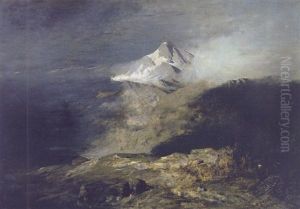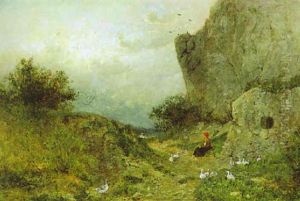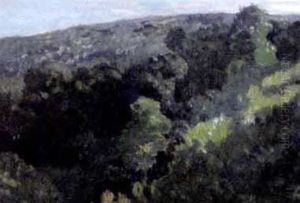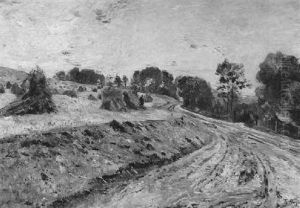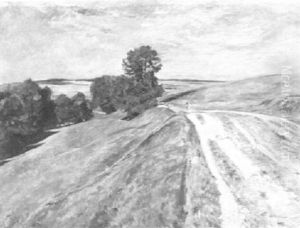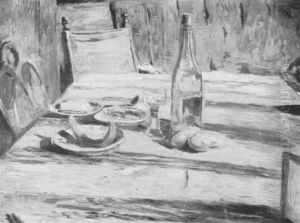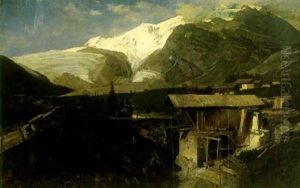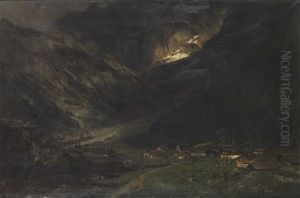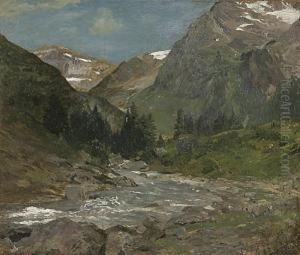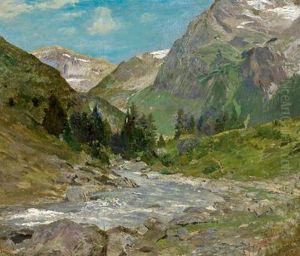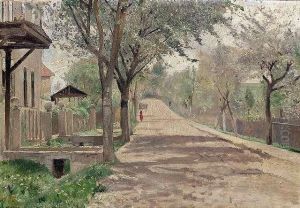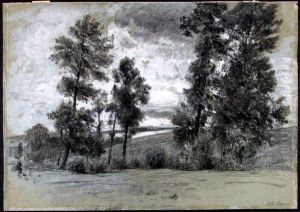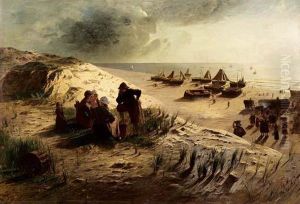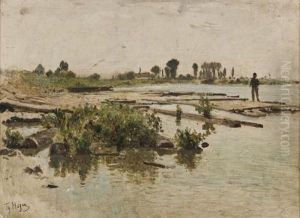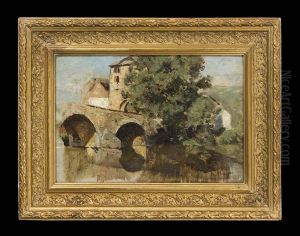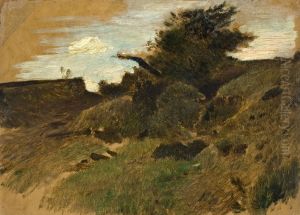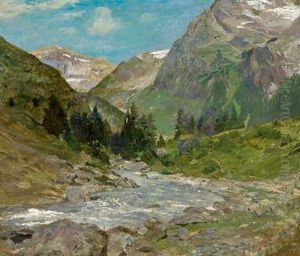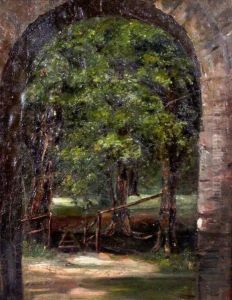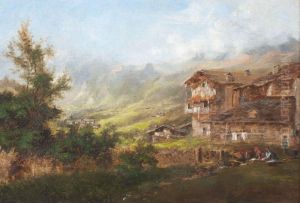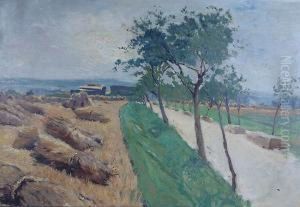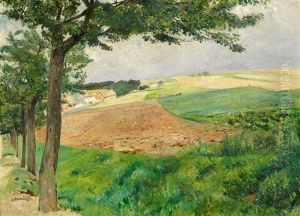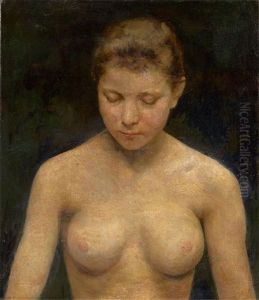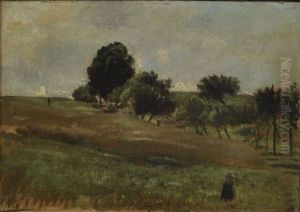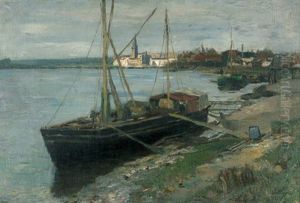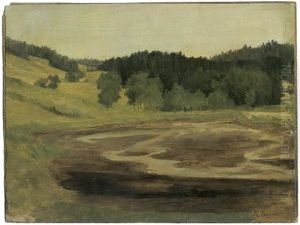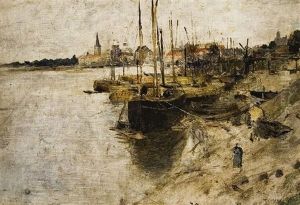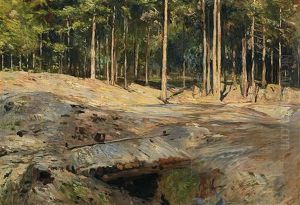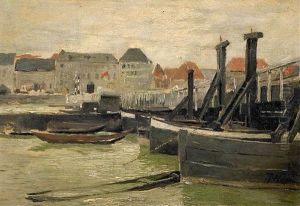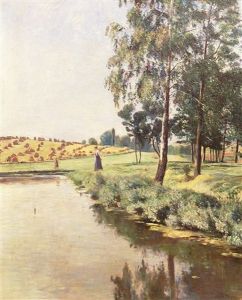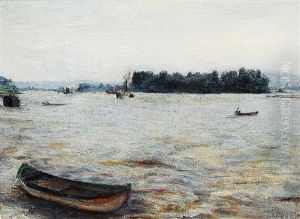Theodor Joseph Hagen Paintings
Theodor Joseph Hagen was a German painter associated with the Düsseldorf school of painting, which was a group of artists who studied or worked at the Düsseldorf Academy in the 19th century. Born on May 19, 1842, in Düsseldorf, Hagen initially embarked on a commercial career before deciding to pursue art. His artistic education began at the Düsseldorf Academy, where he studied under the landscape painter Oswald Achenbach and the influential artist Hans Gude.
Hagen's early work was characterized by the detailed and realistic landscapes, which were typical of the Düsseldorf school's approach. However, as his style developed, Hagen became one of the early adopters of Impressionism in Germany. This shift in style was partially influenced by his travels to Belgium and the Netherlands, where he encountered the works of the great Dutch masters. He also spent a significant amount of time in Weimar, Germany, and became a professor at the Grand-Ducal Saxon Art School in Weimar.
Throughout his career, Hagen was known for his atmospheric landscapes that captured the changing effects of light and weather, a hallmark of Impressionist painting. His later works often depicted the countryside and rural scenes around Weimar, and he played a critical role in introducing the Impressionist style to the German art world. Despite his embrace of Impressionism, Hagen's work retained a certain solidity in composition and a dedication to capturing the mood of a scene rather than fleeting moments, which often distinguished him from his French contemporaries.
Theodor Joseph Hagen's contribution to German landscape painting was significant, and he continued to teach and paint until his death on January 12, 1919, in Weimar. His paintings can be found in various museums and private collections, and he is remembered as one of the important figures in the transition from traditional to modernist approaches in German art.
